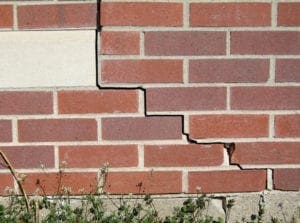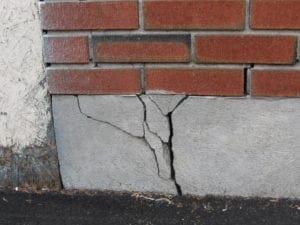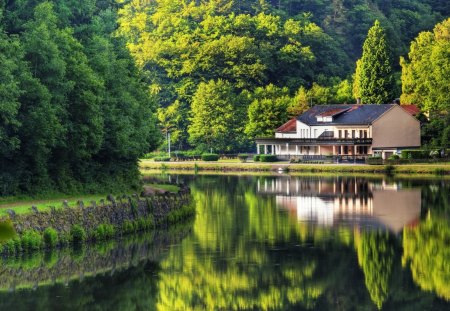Marine clay is the type of soil that is very common in our area and often associated with causing problems for our homes. So, what exactly is marine clay and what do we need to know to make sure our homes are protected?
What Exactly IS Marine Clay?
Marine clay is a type of soft soil that is primarily found offshore and in coastal areas. It is typically considered problematic due to its high moisture content. It contains montmorillonite, a type of clay that expands and contracts when soil moisture changes. It shrinks in dry periods of the year and swells during wet periods. Slight changes in moisture content are sufficient to cause detrimental shrinking and swelling.
Marine clay in our area refers to soil formed by Potomac River sediment during the buildup of the coastal plains. It is primarily found east of I-95, in Prince George’s County, Anacostia, Arlington, Alexandria, Fairfax, and Prince William counties.
If you’re wondering if your home was built on marine clay, use this link to find out.
Why is Marine Clay a Problem?
Many factors determine how a house will be affected by marine clay, including how the ground was treated prior to the home’s construction, how the home was built, and how the drainage system was designed.
Marine clay can cause problems in several ways, ranging from major structural damage in houses to poor drainage in yards. The most common problem, however, is the  settlement and movement of foundation footings. When a house it sited on marine clay, it can develop cracks, bulging walls, and the home can even move. Telltale signs of marine clay problems include exterior cracks in a horizontal or stair-step pattern and the buckling of interior walls and floors.
settlement and movement of foundation footings. When a house it sited on marine clay, it can develop cracks, bulging walls, and the home can even move. Telltale signs of marine clay problems include exterior cracks in a horizontal or stair-step pattern and the buckling of interior walls and floors.
Marine clay issues are most often seen in older homes, as a common shortcut was to backfill with soil removed during excavation. Damage to foundation walls on marine clay tends to occur when this type of soil is placed in the backfill against a basement’s foundation and retaining walls. If marine clay was used, a dense, impermeable barrier surrounds the house and traps water, casting pressure to builds and push against walls that were not designed for such pressure. Eventually, the base of those walls can give way.
In drought, the opposite occurs. As soil cracks and shrinks from the sides and footings of the house, the house begins to move vertically. This movement may cause structures like an addition or a chimney to away. Bricks may pull away from door and window frames, causing cracks to appear.
Keep in mind that small settlement cracks are fairly common in new construction, usually appearing during construction or within the first year. Cracks that suddenly appear after five years are most likely caused by marine clay.
What Can Be Done To Prevent Problems?
 It’s important to note that homeowners in our area have been dealing with marine clay since homes were built here. The problems it causes can be mitigated but the worst thing you can do is ignore the problem. Be proactive and keep water away from foundation walls is the best way to maintain a home where there is marine clay. Here are some tips:
It’s important to note that homeowners in our area have been dealing with marine clay since homes were built here. The problems it causes can be mitigated but the worst thing you can do is ignore the problem. Be proactive and keep water away from foundation walls is the best way to maintain a home where there is marine clay. Here are some tips:
- First, ensure that a positive grade, ideally, five percent (or a six-inch drop in ten feet), slopes away from your home to help remove rainfall runoff. Backfill next to basement walls normally settles after several years, leaving depressions in which water collects. Maintaining this slope will create a more constant moisture environment for the soil below the home’s footings.
FYI: in most new construction homes, gravel or other quick-draining material is used to backfill around a house, aiding drainage.
- Make sure that your landscaping does not trap water above the backfill next to the basement wall. Regrading the yard is sometimes necessary to carry surface water away.
- Position gutters and downspouts so that they carry all roof water beyond the backfill or at least ten feet away from your home.
- Ensure that large trees are at least 20 feet away from the house. Keep in mind a tree’s roots can extend beyond the longest branches. These fine roots are the ones that remove water from the ground. If you have a tree that is close to the house you think may be causing foundation problems, you may need to remove it to stabilize the soil.
The Bottom Line
Don’t ignore your soil! While some cracks and settling are normal, a home built on marine clay can experience major issues. Be proactive if your home is sited on marine clay. Take the needed steps to keep water away from your foundation.
If you’re still having issues from marine clay, consult with an experienced professional structural engineer. If you need a recommendation, just let us know!


